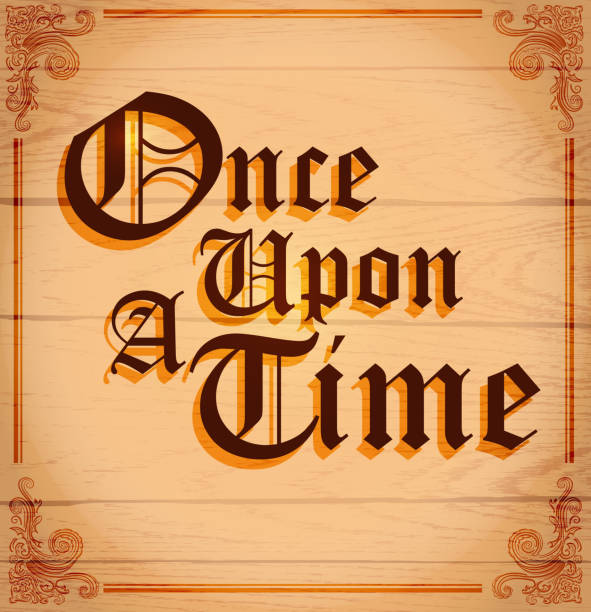 How many parents and professionals have experienced the following scenario? The child in question is reading very fluently (Landi & Ryherd, 2017) but comprehending very little of what s/he is reading. Attempts at remediation follow (oftentimes without the administration of a comprehensive assessment) with a focus on reading texts and answering text-related questions. However, much to everyone’s dismay the problem persists and worsens over time. The child’s mental health suffers as a result since numerous studies show that reading deficits including dyslexia are associated with depression, anxiety, attention, as well as behavioral problems (Arnold et al., 2005; Knivsberg & Andreassen, 2008; Huc-Chabrolle, et al, 2010; Kempe, Gustafson, & Samuelsson, 2011; Boyes, et al, 2016; Livingston et al, 2018). Continue reading Comprehending Reading Comprehension
How many parents and professionals have experienced the following scenario? The child in question is reading very fluently (Landi & Ryherd, 2017) but comprehending very little of what s/he is reading. Attempts at remediation follow (oftentimes without the administration of a comprehensive assessment) with a focus on reading texts and answering text-related questions. However, much to everyone’s dismay the problem persists and worsens over time. The child’s mental health suffers as a result since numerous studies show that reading deficits including dyslexia are associated with depression, anxiety, attention, as well as behavioral problems (Arnold et al., 2005; Knivsberg & Andreassen, 2008; Huc-Chabrolle, et al, 2010; Kempe, Gustafson, & Samuelsson, 2011; Boyes, et al, 2016; Livingston et al, 2018). Continue reading Comprehending Reading Comprehension
Category: Clinical Assessment
Comprehensive Assessment of Elementary Aged Children with Subtle Language and Literacy Deficits
 Lately, I’ve been seeing more and more posts on social media asking for testing suggestions for students who exhibit subtle language-based difficulties. Many of these children are typically referred for initial assessments or reassessments as part of advocate/attorney involved cases, while others are being assessed due to the parental insistence that something “is not quite right” with their language and literacy abilities, even in the presence of “good grades.” Continue reading Comprehensive Assessment of Elementary Aged Children with Subtle Language and Literacy Deficits
Lately, I’ve been seeing more and more posts on social media asking for testing suggestions for students who exhibit subtle language-based difficulties. Many of these children are typically referred for initial assessments or reassessments as part of advocate/attorney involved cases, while others are being assessed due to the parental insistence that something “is not quite right” with their language and literacy abilities, even in the presence of “good grades.” Continue reading Comprehensive Assessment of Elementary Aged Children with Subtle Language and Literacy Deficits
Clinical Assessment of Reading Abilities of Elementary Aged Children
Several years ago I wrote a post about how to perform clinical reading assessments of adolescent students. Today I am writing a follow-up post with a focus on the clinical reading assessment of elementary-aged students. For this purpose, I often use the books from the Continental Press series entitled: Content Reading for Geography, Social Studies, & Science. Texts for grades 2-7 of the series are perfect for assessment of struggling elementary-aged readers. Continue reading Clinical Assessment of Reading Abilities of Elementary Aged Children
Neuropsychological or Language/Literacy: Which Assessment is Right for My Child?
![]() Several years ago I began blogging on the subject of independent assessments in speech pathology. First, I wrote a post entitled “Special Education Disputes and Comprehensive Language Testing: What Parents, Attorneys, and Advocates Need to Know“, in which I used 4 different scenarios to illustrate the importance of comprehensive language evaluations for children with subtle language and learning needs. Then I wrote about: “What Makes an Independent Speech-Language-Literacy Evaluation a GOOD Evaluation?” in order to elucidate on what actually constitutes a good independent comprehensive assessment. Continue reading Neuropsychological or Language/Literacy: Which Assessment is Right for My Child?
Several years ago I began blogging on the subject of independent assessments in speech pathology. First, I wrote a post entitled “Special Education Disputes and Comprehensive Language Testing: What Parents, Attorneys, and Advocates Need to Know“, in which I used 4 different scenarios to illustrate the importance of comprehensive language evaluations for children with subtle language and learning needs. Then I wrote about: “What Makes an Independent Speech-Language-Literacy Evaluation a GOOD Evaluation?” in order to elucidate on what actually constitutes a good independent comprehensive assessment. Continue reading Neuropsychological or Language/Literacy: Which Assessment is Right for My Child?
Clinical Fellow (and Setting-Switching SLPs) Survival Guide in the Schools
 It’s early August, and that means that the start of a new school year is just around the corner. It also means that many newly graduated clinical fellows (as well as SLPs switching their settings) will begin their exciting yet slightly terrifying new jobs working for various school systems around the country. Since I was recently interviewing clinical fellows myself in my setting (an outpatient school located in a psychiatric hospital, run by a university), I decided to write this post in order to assist new graduates, and setting-switching professionals by describing what knowledge and skills are desirable to possess when working in the schools. Continue reading Clinical Fellow (and Setting-Switching SLPs) Survival Guide in the Schools
It’s early August, and that means that the start of a new school year is just around the corner. It also means that many newly graduated clinical fellows (as well as SLPs switching their settings) will begin their exciting yet slightly terrifying new jobs working for various school systems around the country. Since I was recently interviewing clinical fellows myself in my setting (an outpatient school located in a psychiatric hospital, run by a university), I decided to write this post in order to assist new graduates, and setting-switching professionals by describing what knowledge and skills are desirable to possess when working in the schools. Continue reading Clinical Fellow (and Setting-Switching SLPs) Survival Guide in the Schools
Helpful Smart Speech Therapy Site Searching Tips
 Over the years this blog has amassed many posts on a variety of topics pertaining to the assessment and treatment in speech-language pathology. With over 300 posts and over 130 search categories it’s no wonder that some of you have reached out to ask about effective ways of finding relevant information quickly. As such, in addition to the existing categories pertaining to specific topics (e.g., writing, social communication, etc.) I have created two specific categories which were asked about by numerous blog subscribers in recent emails. Continue reading Helpful Smart Speech Therapy Site Searching Tips
Over the years this blog has amassed many posts on a variety of topics pertaining to the assessment and treatment in speech-language pathology. With over 300 posts and over 130 search categories it’s no wonder that some of you have reached out to ask about effective ways of finding relevant information quickly. As such, in addition to the existing categories pertaining to specific topics (e.g., writing, social communication, etc.) I have created two specific categories which were asked about by numerous blog subscribers in recent emails. Continue reading Helpful Smart Speech Therapy Site Searching Tips
Analyzing Discourse Abilities of Adolescents via Peer Conflict Resolution (PCR) Tasks
 A substantial portion of my caseload is comprised of adolescent learners. Since standardized assessments possess significant limitations for that age group (as well as in general), I am frequently on the lookout for qualitative clinical measures that can accurately capture their abilities in the areas of discourse, critical thinking, and social communication.
A substantial portion of my caseload is comprised of adolescent learners. Since standardized assessments possess significant limitations for that age group (as well as in general), I am frequently on the lookout for qualitative clinical measures that can accurately capture their abilities in the areas of discourse, critical thinking, and social communication.
One type of an assessment that I find particularly valuable for this age group is a set of two Peer Conflict Resolution Tasks. First described in a 2007 article by Dr. Marylin Nippold and her colleagues, they assess expository discourse of adolescent learners. Continue reading Analyzing Discourse Abilities of Adolescents via Peer Conflict Resolution (PCR) Tasks
Identifying Word Finding Deficits in Narrative Retelling of School-Aged Children
 In the past, I have written several posts on the topic of word finding difficulties (HERE and HERE) as well as narrative assessments (HERE and HERE) of school-aged children. Today I am combining these posts together by offering suggestions on how SLPs can identify word finding difficulties in narrative samples of school-aged children. Continue reading Identifying Word Finding Deficits in Narrative Retelling of School-Aged Children
In the past, I have written several posts on the topic of word finding difficulties (HERE and HERE) as well as narrative assessments (HERE and HERE) of school-aged children. Today I am combining these posts together by offering suggestions on how SLPs can identify word finding difficulties in narrative samples of school-aged children. Continue reading Identifying Word Finding Deficits in Narrative Retelling of School-Aged Children
Analyzing Narratives of School-Aged Children

As mentioned previously, for elicitation purposes, I frequently use the books recommended by the SALT Software website, which include: ‘Frog Where Are You?’ by Mercer Mayer, ‘Pookins Gets Her Way‘ and ‘A Porcupine Named Fluffy‘ by Helen Lester, as well as ‘Dr. DeSoto‘ by William Steig. Continue reading Analyzing Narratives of School-Aged Children
Social Communication and Describing Skills: What is the Connection?
When it comes to the identification of social communication deficits, SLPs are in a perpetual search for quick and reliable strategies that can assist us in our quest of valid and reliable confirmation of social communication difficulties. The problem is that in some situations, it is not always functional to conduct a standardized assessment, while in others a standardized assessment may have limited value (e.g., if the test doesn’t assess or limitedly assesses social communication abilities).
So what type of tasks are sensitive to social communication deficits? Quite a few, actually. For starters, various types of narratives are quite sensitive to social communication impairment. From fictional to expository, narrative analysis can go a long way in determining whether the student presents with appropriate sequencing skills, adequate working memory, age-level grammar, and syntax, adequate vocabulary, pragmatics, perspective taking abilities, critical thinking skills, etc. But what if one doesn’t have the time to record and transcribe a narrative retelling, what then? Actually, a modified version of a narrative assessment task can still reveal a great deal about the student’s social communication abilities.
 For the purpose of this particular task, I like to use photos depicting complex social communication scenarios. Then I simply ask the student: “Please describe what is happening in this photo.” Wait a second you may say: “That’s it? This is way too simple! You can’t possibly determine if someone has social communication deficits based on a single photo description!”
For the purpose of this particular task, I like to use photos depicting complex social communication scenarios. Then I simply ask the student: “Please describe what is happening in this photo.” Wait a second you may say: “That’s it? This is way too simple! You can’t possibly determine if someone has social communication deficits based on a single photo description!”
I beg to differ. Here’s an interesting fact about students with social communication deficits. Even the ones with FSIQ in the superior range of functioning (>130) with exceptionally large lexicons, still present with massive deficits when it comes to providing coherent and cohesive descriptions and summaries.
Here are just a few reasons why this happens. Research indicates that students with social communication difficulties present with Gestalt Processing deficits or difficulty “seeing/grasping the big picture”(Happe & Frith, 2006). Rather than focusing on the main idea, they tend to focus on isolated details due to which they have a tendency to provide an incomplete/partial information about visual scenes, books, passages, stories, or movies. As such, despite possessing an impressive lexicon, such students may say about the above picture: “She is drawing” or “They are outside” and omit a number of relevant to the picture details.
Research also confirms that another difficulty that students with impaired social communication abilities present with is assuming perspectives of others (e.g., relating to others, understanding/interpreting their beliefs, thoughts, feelings, etc.) (Kaland et al, 2007). As such they may miss relevant visual clues pertaining to how the boy and girl are feeling, what they are thinking, etc.
Students with social communication deficits also present with anaphoric referencing difficulties. Rather than referring to individuals in books and pictures by name or gender, they may nonspecifically utilize personal pronouns ‘he’, ‘she’ or ‘they’ to refer to them. Consequently, they may describe the individuals in the above photo as follows: “She is drawing and the boy is looking”; or “They are sitting at the table outside.”
Finally, students with social communication deficits may produce poorly constructed run-on (exceedingly verbose) or fragmented utterances (very brief) lacking in coherence and cohesion to describe the main idea in the above scenario (Frith, 1989).
Of course, by now many of you want to know regarding what constitutes as pragmatically appropriate descriptions for students of varying ages. For that, you can visit a thread in the SLPs for Evidence-Based Practice Group on Facebook entitled: GIANT POST WITH FREE LINKS AND RESOURCES ON THE TOPIC OF TYPICAL SPEECH AND LANGUAGE MILESTONES OF CHILDREN 0-21 YEARS OF AGE to locate the relevant milestones by age.
Interested in seeing these assessment strategies in action? Download a FREEBIE HERE and see for yourselves.
References:
- Frith, U., (1989). Autism: Explaining the Enigma. Blackwell, Oxford.
- Happe, F. & Frith, U. (2006). The weak coherence account: Detail-focused cognitive style in Autism Spectrum Disorders. Journal of Autism and Developmental Disorders, 36 (1), 5-25.
- Kaland, N., Callesen, K., Moller-Nielsen, A., Mortensen, E. L., & Smith, L. (2007). Performance of children and adolescents with Asperger Syndrome or High-functioning Autism on advanced theory of mind tasks. Journal of Autism and Developmental Disorders. 38, 1112-1123.